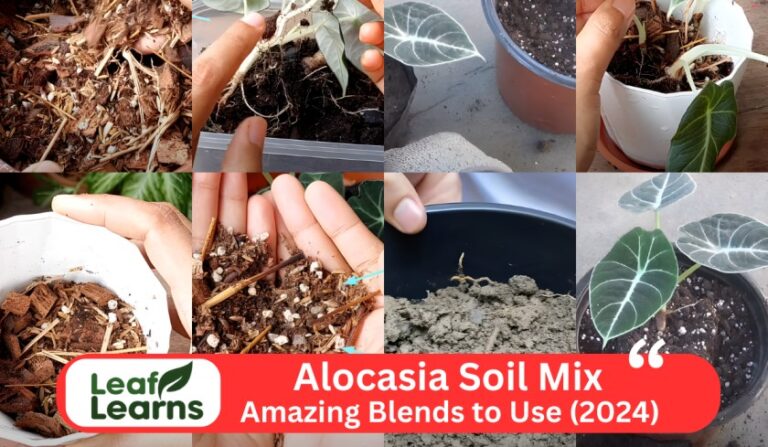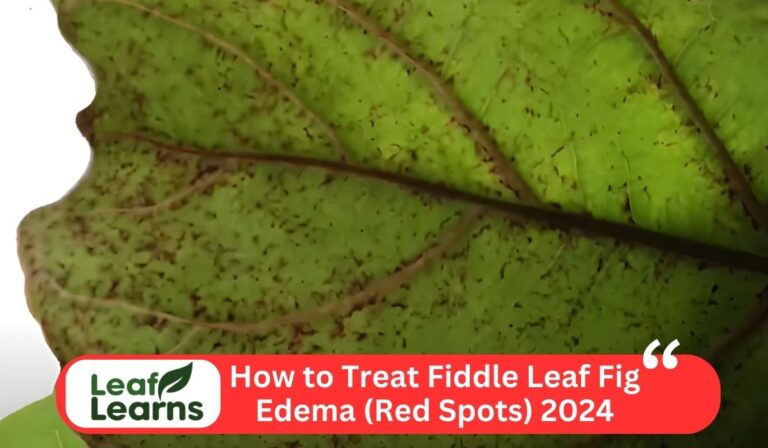Beyond Beauty: Role and Care of Monstera Aerial Roots (2023)
The Monstera aerial roots are like the keys to unlocking the plant’s language, allowing you to get the best results.
Discover Monstera plants’ striking beauty and unmatched resilience in the lush world of Monstera plants. The unique split leaves of Monstera captivate plant enthusiasts worldwide.
Aerial roots are often misunderstood, yet vital elements of Monstera’s green tapestry, which we unravel in this brief journey. A plant’s root system isn’t just decorative; it is crucial to its health.
Our guide to Monstera aerial roots delves into the mystifying world of thriving indoor jungles, clarifying their significance.
Contents
- 1 Types of Monstera Roots
- 2 Why Do Monsteras Grow Aerial Roots?
- 3 Benefits of Aerial Roots
- 4 A Closer Look at Monstera Aerial Roots
- 5 How to Deal with Monstera Roots: Top 5 Tips
- 6 Propagation with Monstera Aerial Roots
- 7 Care and Maintenance of Aerial Roots
- 8 Monstera Roots in Different Varieties
- 9 Beyond Monstera: Aerial Roots in Other Plants
- 10 Caring for Monstera Roots: A Comprehensive Guide
- 11 Mastering Monstera Propagation: Harnessing the Power of Aerial Roots
- 12 Conclusion
- 13 FAQs
Types of Monstera Roots
Unlock the botanical secrets of your beloved Monstera with a deep dive into its fascinating root system.
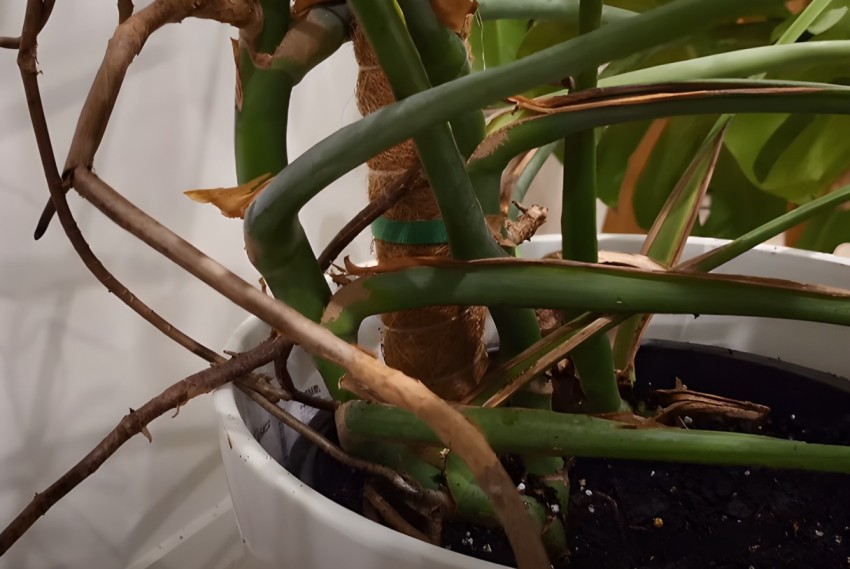
Aerial Roots
This plant’s dangling marvels provide support, absorb moisture, and exhibit Monstera’s unique climbing ability. Explore your plant’s surroundings and watch it do acrobatics.
Underground Roots
Plants like Monstera are anchored by their underground roots, which provide stability and absorb essential nutrients. Monstera thrives and stands tall thanks to these silent heroes.
Variations and Functions
Find out how Monstera roots play unique roles in the world.
Explore how these varying roots work harmoniously to anchor the plant, from the adventurous aerial roots seeking support to the reliable underground roots securing the plant’s foundation.
Let’s unpack the mysteries behind “Types of Monstera Roots” so we can better understand this green friend.
Why Do Monsteras Grow Aerial Roots?
Unraveling the mystery of why Monsteras grow aerial roots is like discovering the plant’s secret language. These fascinating roots serve multiple purposes.
- First of all, Monsteras possess a climbing behavior encoded in their DNA. Your indoor jungle will have an alluring touch when those roots aren’t just reaching out.
- Furthermore, Monsteras are adept at absorbing water and nutrients. Aerial roots serve as highly effective scouts, efficiently absorbing nutrients.
- In addition, Monsteras show hemiepiphyte characteristics that blur the boundaries between terrestrial and epiphytic growth.
Plants embrace both worlds through their aerial roots, enhancing their ability to adapt and survive.
When you admire dangling roots on your Monstera, remember that it’s on a quest for growth, exploration, and an overall touch of elegance.
Benefits of Aerial Roots
Anchoring and Support: Consider your plant’s roots as natural rock climbers. In addition to providing stability, aerial roots enable Monstera to reach new heights.
Water and Nutrient Absorption: Nature’s straws, these roots are like nature’s sponges, soaking up moisture and essential nutrients.
Plants grow lusher and more vigorously when they are supplemented with these nutrients.
Comparison with Underground Roots: The roots of aerial plants are more versatile than those of underground plants.
Your Monstera will benefit from their ability to not only absorb nutrients but also provide structural support. A vibrant, resilient green companion is yours when you embrace Monstera’s aerial roots.
A Closer Look at Monstera Aerial Roots
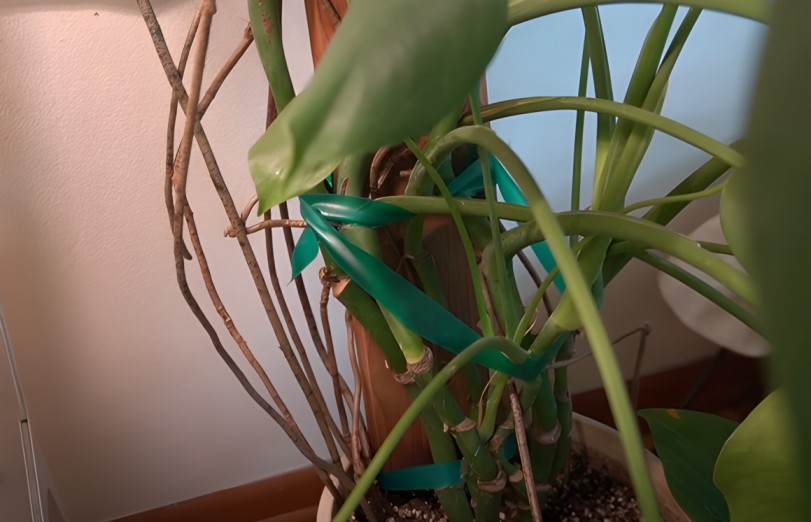
Appearance and Characteristics
The aerial roots of Monstera emerge from the stems as wiry extensions, providing a captivating display for your indoor jungle.
They feature a combination of smooth surfaces and fine root hairs, giving them a distinctive appearance.
The tan to brown color of your Monstera plant blends beautifully with lush greenery, adding aesthetic appeal.
Differences from Other Types of Roots
Aerial roots of Monstera penetrate above the soil line, adapting to its hemiepiphytic nature. Both structural support and nutrient absorption are provided by these roots.
Monstera’s growth strategy relies on their unique characteristics.
It is important to appreciate the distinctive characteristics of Monstera plants that contribute to their overall health and beauty.
Addressing concerns about excessive or absent aerial roots
Trying to find your way through the Monstera jungle? For your plant’s well-being, it is crucial to get rid of excessive or absent aerial roots.
The Monstera’s aerial roots prove that it has embraced its natural growth pattern, which demonstrates its vitality. You may also need to adjust your plant’s environment if it lacks these roots.
You want your indoor jungle to thrive as well as look good, so finding the right balance is essential to making it thrive.
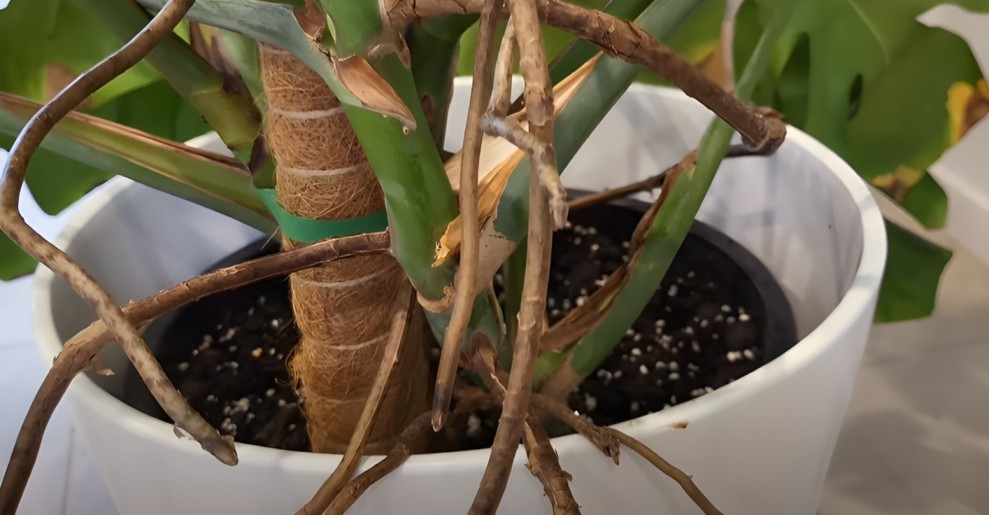
How to Deal with Monstera Roots: Top 5 Tips
- Celebrate that aerial root system; it’s an indication of a thriving Monstera.
- The key to a tidy look is to trim your plant with care without causing harm to it.
- Adding charm and structural support to aerial roots by guiding them onto moss poles.
- Monstera’s aerial roots can be used to propagate your plants like a pro.
Training Methods: Make your Monstera’s aerial roots flourish with finesse. To enhance plant health and aesthetics, use a sturdy moss pole or trellis.
Using this method ensures a satisfied and well-supported Monstera by mimicking its natural climbing behavior.
Pruning Considerations: Aerial roots of Monstera must be pruned with precision. Maintain a tidy appearance by trimming only what is necessary.
The roots of the plant are critical to nutrient absorption and stability, so avoid cutting too close to them. To ensure a precise cut, use clean, sharp scissors.
Can Aerial Roots Be Propagated? Yes, of course! Create new Monstera wonders with those aerial roots.
In addition to being possible, aerial roots are also highly effective at propagating.
Water or soil can be used to encourage root growth, and soon your plant will be ready to adorn your home.
Propagation with Monstera Aerial Roots
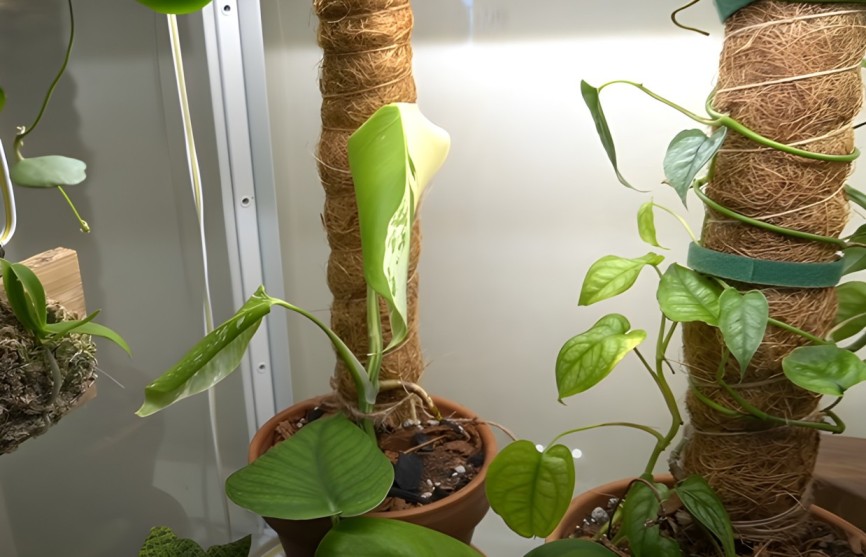
Step Guide to Propagating Using Aerial Roots
Begin by identifying healthy Aerial roots, usually found dangling from stems. These roots, often ignored, are your secret weapon for creating new plants. First, gather a few key supplies: sharp scissors, a suitable pot, and well-draining soil.
- Identify Healthy Aerial Roots: Make sure the roots are robust, firm, and undamaged.
- Prepare the Cutting: Make sure the aerial root is several inches long before cutting it from the main plant.
- To prevent waterlogging, select a pot that has drainage holes.
- Plant the Cutting: Make sure the cut end of the aerial root is securely anchored in the soil.
- Provide Optimal Conditions: Keep the pot in an area with plenty of light, but avoid direct sunlight.
- Maintain Moisture: Maintain a moist, but not waterlogged soil to encourage root growth.
Addressing Common Concerns and Misconceptions
- There are some aerial roots that are propagation powerhouses, but these roots do not guarantee success. Patience is key.
- Even though aerial roots are beneficial to Monstera propagation, it is possible to propagate the plant using other methods, as well. Using aerial roots is, however, the best option.
- In a few weeks to a couple of months, you can expect to see visible progress in the root system.
Care and Maintenance of Aerial Roots
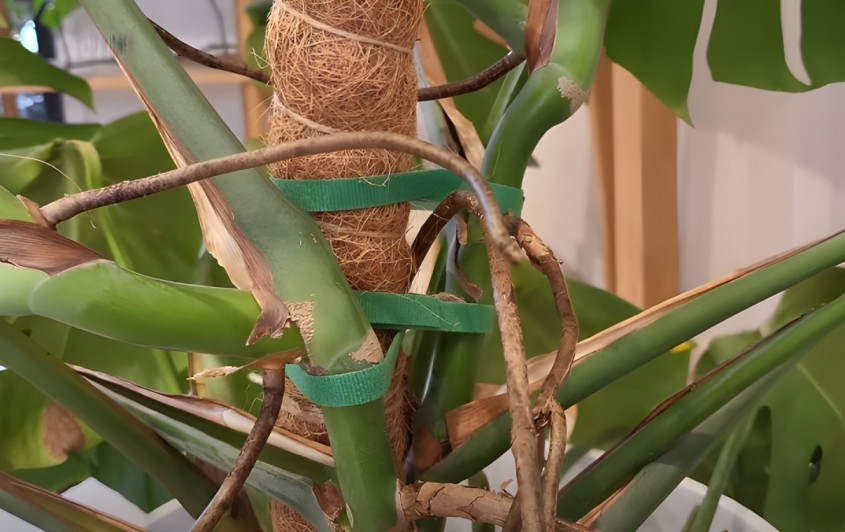
Adequate Light, Soil, Watering, and Nutrients
A Monstera aerial root flourishes when its aerial roots mimic rainforest surroundings. It needs bright, indirect light to fuel photosynthesis, but should be protected from harsh sun rays.
A consistent watering routine and a slight dryness between waterings ensure optimal growth.
These roots dislike standing water, so choose well-draining soil to prevent waterlogging.
During the growing season, keep your Monstera’s aerial roots well-nourished by feeding them a balanced fertilizer. This will make the climb of the plant easier.
Troubleshooting Common Issues
There may be times when challenges arise. If your aerial roots are discolored or mushy, you may have overwatered – adjust your watering schedule as soon as possible.
Dry and crispy roots may also indicate under-watering; increase your watering schedule as soon as possible.
Make changes to your Monstera’s environment, such as increasing humidity, ensuring adequate light, and adjusting your watering schedule.
Encouraging Healthy Growth
Providing support for Monstera plants not only encourages upward growth, it also enhances the aesthetics of the plant.
Monstera plants naturally climb trees in the wild, so introducing a moss pole or support structure can promote robust aerial root growth.
Ensure your Monstera is healthy by inspecting it regularly for signs of pests or diseases. Healthy plants produce thriving aerial roots and have less damaged leaves.
Pruning any damaged or yellowing leaves will redirect the plant’s energy towards roots.
Monstera Roots in Different Varieties
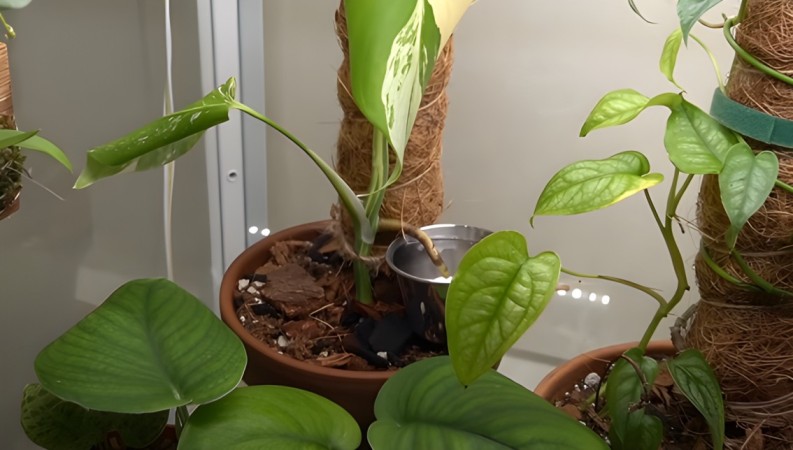
Specifics for Monstera deliciosa, Monstera adansonii, Monstera xanadu
Your plant-parenting journey can be enhanced by discovering different varieties of Monstera roots. Monstera Deliciosa is known for its iconic split leaves.
While other plants, like Monstera adansonii, commonly called Swiss cheese plant, have more delicate aerial roots that complement their intricate foliage.
It is crucial to understand these differences in growth patterns in Monstera varieties so that you can customize your care routine accordingly.
Monstera xanadu, a cultivar with compact growth, contributes stability and support using aerial roots.
Variations in growth patterns and care
Consider providing a climbing moss pole for Monstera deliciosa to nurture its bold aerial roots. In contrast, the aerial roots of Monstera adansonii may need a more humid environment to thrive.
A well-balanced mix of light and occasional pruning can make the compact Monstera xanadu healthier.
With flourishing aerial roots, each Monstera variety will savor its distinctive beauty with flourishing plant care regimen if you incorporate these insights into your plant care regimen.
Embrace the diversity within the Monstera family and let the mesmerizing aerial roots serve as a testament to the botanical wonders you cultivate.
Beyond Monstera: Aerial Roots in Other Plants
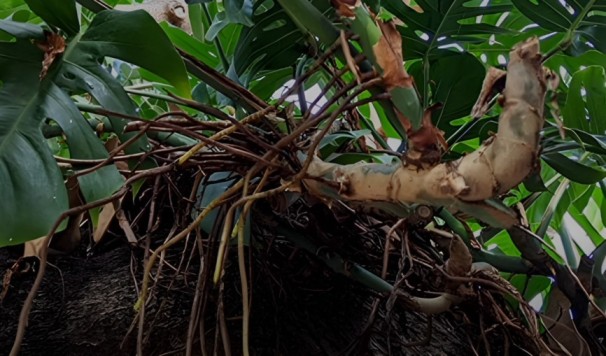
Which Plants Can Have Aerial Roots?
There are a number of plants with aerial roots, not just Monstera, revealing the secrets of the botanical world.
These unique adaptations are demonstrated by orchids, pothos, and ivies.
Plants adapt to their environments in a variety of ways, from stability to nutrient absorption, by way of these roots reaching into the air.
Comparisons with Monstera
Aerial roots of Monstera are renowned for their climbing ability and ability to absorb nutrients, but other plants use these roots differently.
Air layering and stability are achieved by orchids using aerial roots.
This knowledge enhances our appreciation of nature’s creativity beyond Monstera, showcasing one of nature’s wonders, plant adaptation.
Caring for Monstera Roots: A Comprehensive Guide
Taking good care of these type of roots is crucial for the overall health of the plant. One popular method for fostering their growth is through air layering, a technique that involves encouraging roots to develop while still attached to the parent plant.
Monstera adansonii, a variety known for its delicate and fenestrated leaves, often exhibits these aerial roots as part of its natural growth pattern. Understanding what monstera roots are and their purpose is essential for plant enthusiasts.
These roots can be planted, either directly into the soil or water, depending on the preferred method. Some plant caretakers choose to bury aerial roots in the soil to promote further stability and nutrient absorption.
However, careful consideration is needed when deciding whether to cut or trim these roots, as doing so may impact the plant’s overall well-being. If any roots appear damaged or broken, it’s crucial to address the issue promptly to prevent further stress on the plant.
A consistent care routine, including monitoring for signs of drying or discoloration, is vital for maintaining the health of roots.
Mastering Monstera Propagation: Harnessing the Power of Aerial Roots
When it comes to propagating monstera plants, understanding the role of aerial roots is key. These roots play a significant part in the propagation process, and enthusiasts often wonder how to propagate roots successfully.
Monstera deliciosa, a popular variety known for its broad leaves and unique fenestrations, can be propagated through its aerial roots. Propagating monstera roots involves carefully removing them from the parent plant and planting them in either soil or water.
While some plant caretakers choose to put monstera aerial roots directly into water for propagation, others prefer placing them in soil. Watering monstera aerial root during the propagation process is crucial for encouraging healthy growth.
Regular checks on the water levels and the condition of the roots are essential to ensure successful propagation. Additionally, understanding the general questions surrounding aerial roots, such as whether they are good or bad for monstera plants, is vital for making informed decisions during the propagation and care process.
Conclusion
The lush charm and resilient nature of Monstera will take your breath away. The aerial roots of a plant are often misunderstood, but they are vital to its survival.
Like deciphering a unique language, these roots play a pivotal role in your Monstera’s well-being. You can create a thriving indoor jungle by understanding Monstera aerial root.
Come celebrate Monstera’s prowess and learn about other plants with similar charm. Show off your nurtured botanical marvels with lush greenery and roots dangling from your walls.
FAQs
Are aerial roots on Monstera good?
Yes! Monstera aerial roots show a healthy, thriving plant. They improve stability, help plants climb, and absorb moisture and nutrients.
Should I remove aerial roots when propagating Monstera?
It is not necessary to cut off aerial roots, as these roots play an important role in the propagation of Monsteras.
How do you encourage Monstera aerial root growth?
The development of healthy aerial roots is stimulated by offering a moss pole for support and maintaining optimal conditions – adequate light, well-draining soil, and regular watering.
Do aerial roots grow plants?
Climbing plants such as Monstera require aerial roots for their well-being as they anchor and provide additional support.
Is it OK to put Monstera aerial roots in water?
The aerial roots of Monstera can be placed in water to promote root development. This is an effective way to propagate the plant and maintain the roots’ health.
Should Monstera aerial roots be in soil?
Although Monstera aerial roots can be propagated by water, planting them directly into soil ensures a smooth transition and enhances the health of the plant.
Why is my Monstera growing so many aerial roots?
Obviously, your Monstera is thriving. Excessive aerial roots tend to indicate a healthy plant adapting to its surroundings and seeking support.



